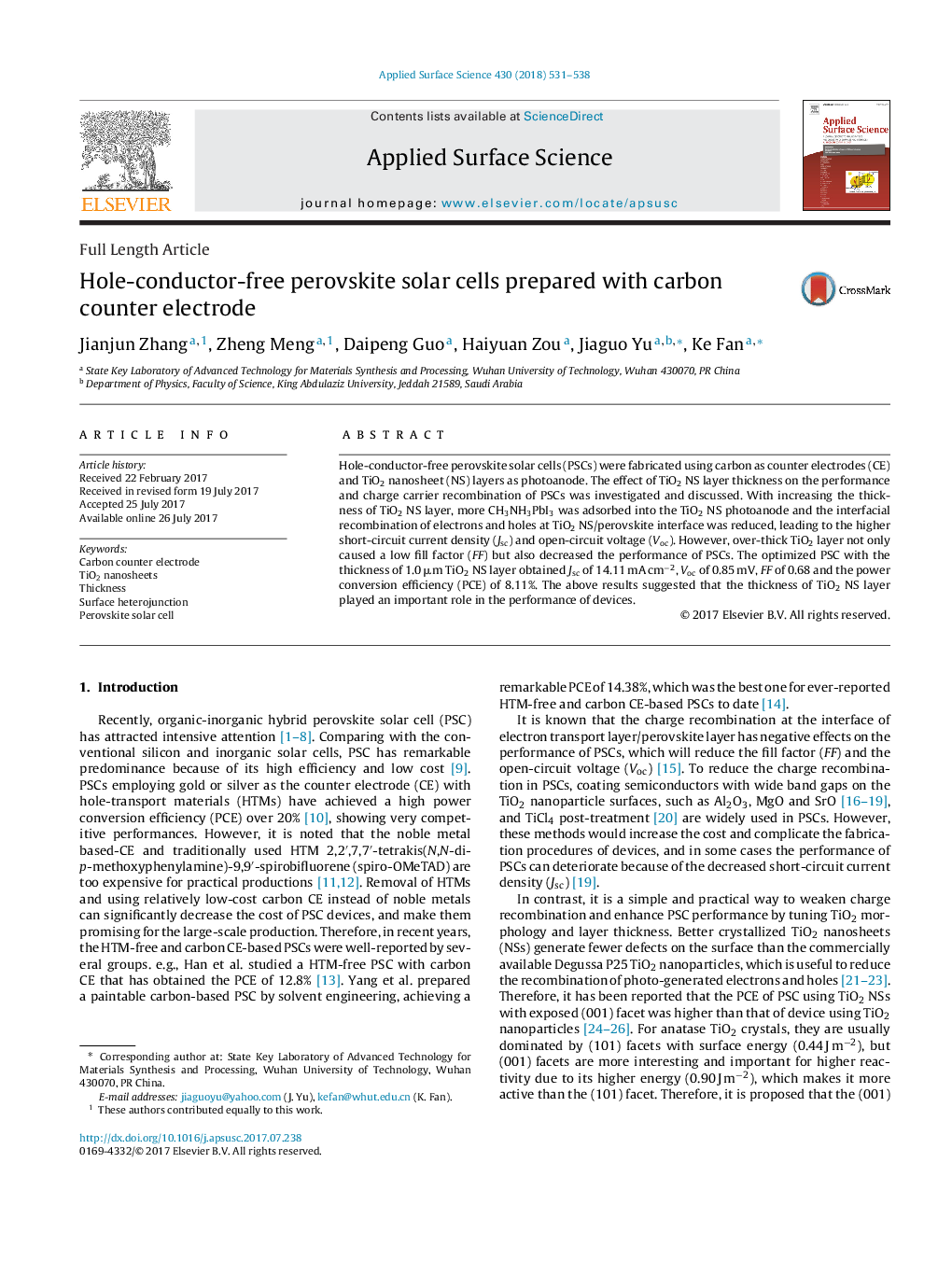| Article ID | Journal | Published Year | Pages | File Type |
|---|---|---|---|---|
| 7836771 | Applied Surface Science | 2018 | 8 Pages |
Abstract
Hole-conductor-free perovskite solar cells (PSCs) were fabricated using carbon as counter electrodes (CE) and TiO2 nanosheet (NS) layers as photoanode. The effect of TiO2 NS layer thickness on the performance and charge carrier recombination of PSCs was investigated and discussed. With increasing the thickness of TiO2 NS layer, more CH3NH3PbI3 was adsorbed into the TiO2 NS photoanode and the interfacial recombination of electrons and holes at TiO2 NS/perovskite interface was reduced, leading to the higher short-circuit current density (Jsc) and open-circuit voltage (Voc). However, over-thick TiO2 layer not only caused a low fill factor (FF) but also decreased the performance of PSCs. The optimized PSC with the thickness of 1.0 μm TiO2 NS layer obtained Jsc of 14.11 mA cmâ2,âVoc of 0.85 mV, FF of 0.68 and the power conversion efficiency (PCE) of 8.11%. The above results suggested that the thickness of TiO2 NS layer played an important role in the performance of devices.
Keywords
Related Topics
Physical Sciences and Engineering
Chemistry
Physical and Theoretical Chemistry
Authors
Jianjun Zhang, Zheng Meng, Daipeng Guo, Haiyuan Zou, Jiaguo Yu, Ke Fan,
